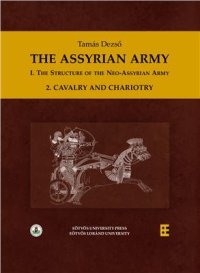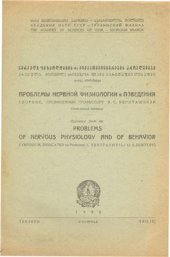
Ebook: The Assyrian Army I: The Structure of the Neo-Assyrian Army, 2. Cavalry and Chariotry
Author: Dezső T.
- Genre: History
- Tags: Исторические дисциплины, Всемирная история, История древнего мира, История Древнего Востока, История Древней Месопотамии
- Language: English
- pdf
Budapest: Eötvös University Press, 2012. — 271 p. — (Antiqua et Orientalia 3; Assyriologia 8/2).
ISBN 978-963-312-076-7.
ISSN 0209-8067.
ISSN 2063-1634.One of the most important chapters in the military history of Assyria and the Near East is the development of the cavalry as an independent arm of the army. Although the art of horse riding was known as early as the beginning of the 2nd millennium B.C., the cavalry as an independent, regular arm of an army can be identified for the first time in Assyria during the early 1-st millennium B.C. In addition to the earlier Near Eastern use of horsemen as 'mounted messengers,' the first depictions of the cavalry as a fighting arm appear in the palace reliefs of Assurnasirpal II (883-859 B.C.). It is obvious that the first Assyrian (and Near Eastern) cavalry units were not established by Assurnasirpal II, and that other Near Eastern peoples had cavalry units at that time. The horse-breeding peoples of the Zagros and Armenian Mountains certainly used cavalry units among their troops. The earliest appearance of this foreign cavalry is in the palace reliefs of Assurnasirpal II, as fleeing horsemen pursued by the Assyrian chariotry. In this scene an Assyrian chariot (perhaps belonging to the king himself) is pressing six enemy horsemen equipped with bows and swords.
ISBN 978-963-312-076-7.
ISSN 0209-8067.
ISSN 2063-1634.One of the most important chapters in the military history of Assyria and the Near East is the development of the cavalry as an independent arm of the army. Although the art of horse riding was known as early as the beginning of the 2nd millennium B.C., the cavalry as an independent, regular arm of an army can be identified for the first time in Assyria during the early 1-st millennium B.C. In addition to the earlier Near Eastern use of horsemen as 'mounted messengers,' the first depictions of the cavalry as a fighting arm appear in the palace reliefs of Assurnasirpal II (883-859 B.C.). It is obvious that the first Assyrian (and Near Eastern) cavalry units were not established by Assurnasirpal II, and that other Near Eastern peoples had cavalry units at that time. The horse-breeding peoples of the Zagros and Armenian Mountains certainly used cavalry units among their troops. The earliest appearance of this foreign cavalry is in the palace reliefs of Assurnasirpal II, as fleeing horsemen pursued by the Assyrian chariotry. In this scene an Assyrian chariot (perhaps belonging to the king himself) is pressing six enemy horsemen equipped with bows and swords.
Download the book The Assyrian Army I: The Structure of the Neo-Assyrian Army, 2. Cavalry and Chariotry for free or read online
Continue reading on any device:

Last viewed books
Related books
{related-news}
Comments (0)


















